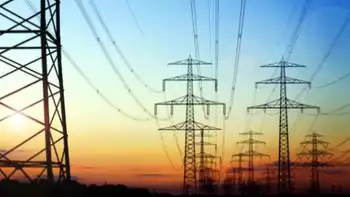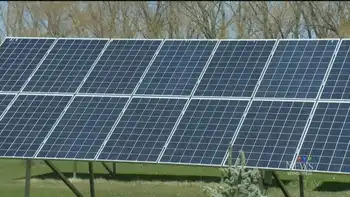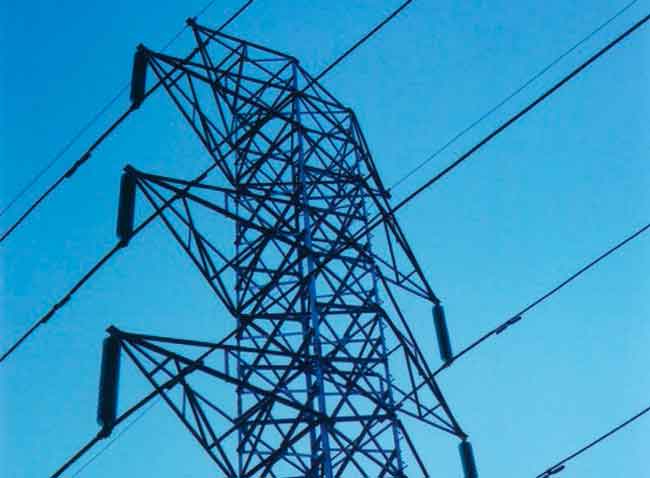Cleaner Coal Is Attracting Some Doubts
By New York Times
High Voltage Maintenance Training Online
Our customized live online or in‑person group training can be delivered to your staff at your location.

- Live Online
- 12 hours Instructor-led
- Group Training Available
Environmentalists are worried, but they put their faith in a technology that gasifies the coal before burning. Such plants are designed, they say, to be more adaptable to separating the carbon and storing it underground.
Most utility officials counter that the gasification approach is more expensive and less reliable, but they say there is no need to worry because their tried-and-true method, known as pulverized coal, can also be equipped later with hardware to capture the global warming gas.
But now, influential technical experts are casting doubts on both approaches.
“The phrases ‘capture ready’ and ‘capture capable’ are somewhat controversial,” said Revis James, the director of the energy technology assessment center at the Electric Power Research Institute. “It’s not like you just leave a footprint for some new equipment.”
Many experts outside the industry share his concerns.
A major new study by faculty members at the Massachusetts Institute of Technology, scheduled for release soon, concludes in a draft version that it is not clear which technology — the so-called integrated gasification combined cycle or pulverized coal — will allow for the easiest carbon capture, because so much engineering work remains to be done.
“Other than recommending that new coal combustion units should be built with the highest efficiency that is economically justifiable, we do not believe that a clear preference for one technology or the other can be justified,” the draft concludes. The M.I.T. study said it was critical that the government “not fall into the trap of picking a technology ‘winner.’ ”
The study leader, Ernest J. Moniz, a former assistant secretary of energy in the Clinton administration, was more blunt. “Clearly in a lot of discussions, I.G.C.C. has been anointed as the solution,” he said referring to integrated gasification combined cycle. He made his comments at a symposium organized by the Aspen Institute in Washington last fall. “We certainly don’t agree with that.”
Retrofitting either a gasification or pulverized coal power plant is not just a matter of adding new equipment and it might be impractical, the experts say. Temperatures and pressures would be designed to be in one range for a plant that captured its carbon, and another if it merely produced electricity with minimum use of fuel. Less fuel means less carbon dioxide production.
Adding carbon capture later also has implications for power supply. Early estimates are that carbon capture will require so much energy that it could reduce plant output by 10 to 30 percent.
Some experts say that the best choice may vary according to the type of coal used. Coal with high moisture content may be less suitable for gasification.
The technical assessment is certainly at odds with the hopes expressed by environmentalists. The TXU Corporation of Dallas is planning a fleet of huge new coal plants of the pulverized variety. In Austin, Tex., Tom Smith, a researcher at Public Citizen, who is helping lead the opposition, said, “It’s clear that coal gasification is by far preferable to building traditional pulverized coal plants.” On Tuesday a Texas District court judge blocked a plan by the governor to “fast track” TXU’s application.
Getting carbon out of the gas stream before combustion must be easier, Mr. Smith said, because the post-combustion gases in a pulverized coal plant are 160 times as great.
Some utility executives agree. David Crane, the chief executive of NRG Energy, said that at some point engineers might work out an economical way to capture carbon after combustion in a pulverized coal plant, but that does not exist now.
Because carbon regulation is coming, he said, gasification plants will be needed.
“For the next generation, it’s clear to me that rather than build a bunch of pulverized coal plants, with their 50-year life, the country is much better off if we go to I.G.C.C.,” he said. The company is planning such a plant in Tonawanda, N.Y.
Others point out that carbon capture from gas made from coal has proved workable, at least at a relatively small nonpower plant that manufactures methane, but that it is still unproved at a large power plant. They say the only way to prove its feasibility is to go ahead now, rather than simply build plants to be modified later.
“There is no reason to wait,” Robert H. Socolow, a professor at Princeton who is an expert on carbon capture, said in an e-mail message. “We are going to learn on the job.”
Some environmentalists dispute the need for new coal plants, but unless there is very rapid progress soon in realizing energy efficiencies or developing the ability to extract and store huge amounts of wind and solar power at reasonable cost, more coal plants seem certain. Compared with cleaner fossil fuels, like natural gas and oil, coal is cheaper and more widely available. So finding a way to capture the greenhouse gases from these plants is critical.
At American Electric Power, which plans to build two gasification plants and add carbon separation later, Bruce H. Braine, the vice president for strategic policy analysis, acknowledged that there was a “retrofit factor” that would raise the price of such a plant above the cost of waiting a few years and building in the separation technology from the start. But because there is demonstrable evidence that separating carbon from gasified coal would work better than at a pulverized coal plant, he said, “we think it’s the right thing to do to move the I.G.C.C. technology forward.”
Engineers agree that it is easier to remove sulfur, mercury, particles and other conventional pollutants from plants that use gasification. But they are more expensive to build, and the industry has little experience with their reliability. Even the manufacturers concede this.
“It will work,” Randy Zwirn, the chief executive of Siemens Power Generation, said of the ability to separate carbon from a gasified coal plant. “The question is, Can it be done economically?”
Power companies need to start getting experience in this field, he said, but they will need subsidies or agreements with state regulators to avoid being unfairly penalized for testing designs that turned out not to run very well, at least not at first. Otherwise, he said, they would stick with tried-and-true methods and the early steps to a truly revolutionary technology might never be taken.
John Thompson, director of the Coal Transition Program at the Clean Air Task Force, an environmental group, argued that coal gasification was superior because it allowed far better control of conventional pollutants, like mercury, and because it offered new ways of making money from coal-fired plants. For example, he said, they might use a gasifier that made fuel for a power generator during peak hours, and in off-peak hours made gas that could be turned into liquid fuel for vehicles or other valuable chemicals.
But at the Electric Power Research Institute, which surveys the technologies for low-carbon generation, Steve Specker, the president, refers to a “horse race” between pulverized coal and combined cycle.
For all the questions about the coal technologies, any new plant should at least be an improvement on what is operating now. The reason is that many plants now running require about 10,000 B.T.U.’s of heat to make a kilowatt-hour. But newer designs, called “supercritical,” use hotter steam, with no moisture, and get more work out of it.
The newest designs, which the industry calls “ultra supercritical,” push down the amount of heat needed to make a kilowatt-hour; engineers expect to reach the range of 7,500 B.T.U.
This will be small consolation, however, if the total number of kilowatt-hours rises sharply at the same time that reducing carbon emissions becomes a national goal.















